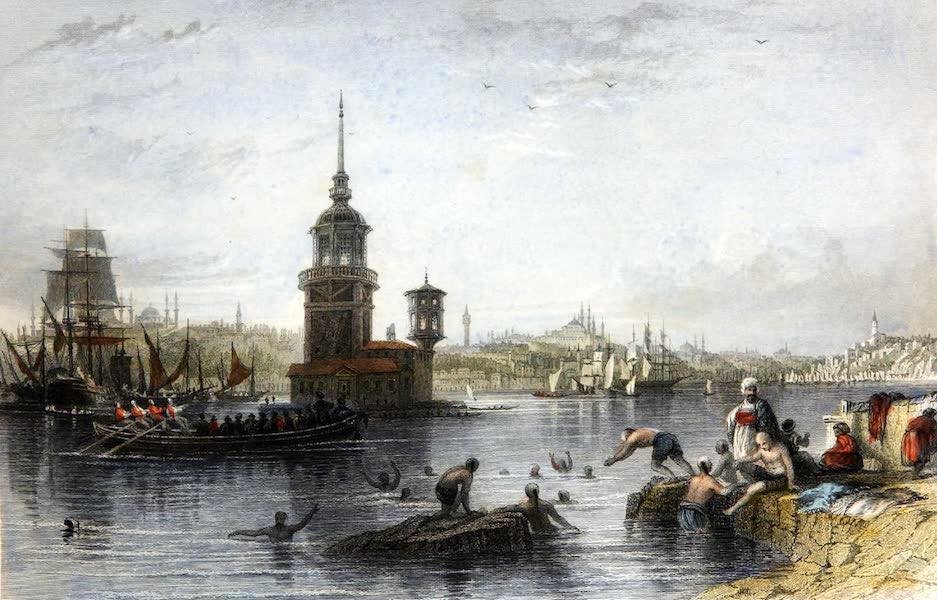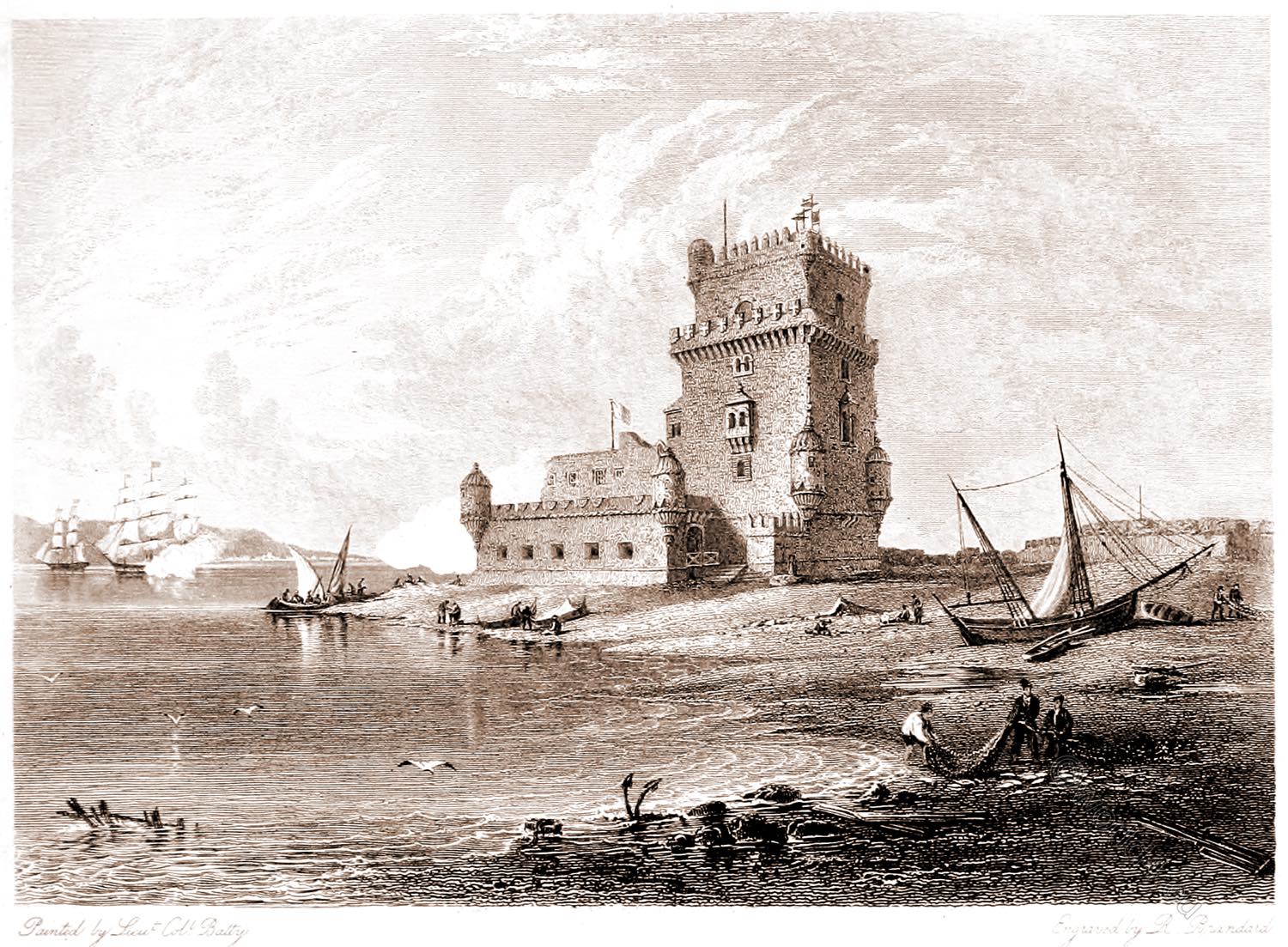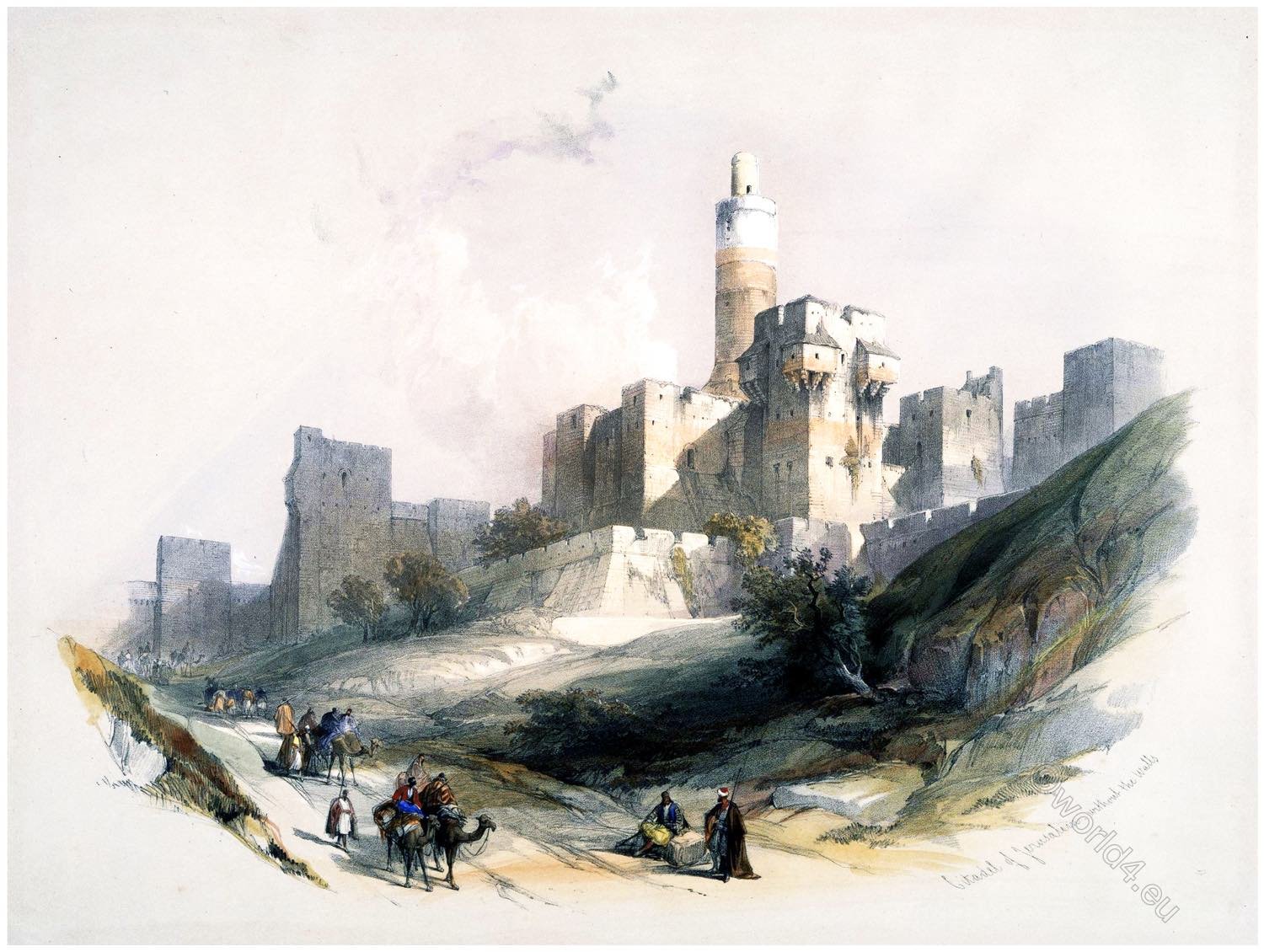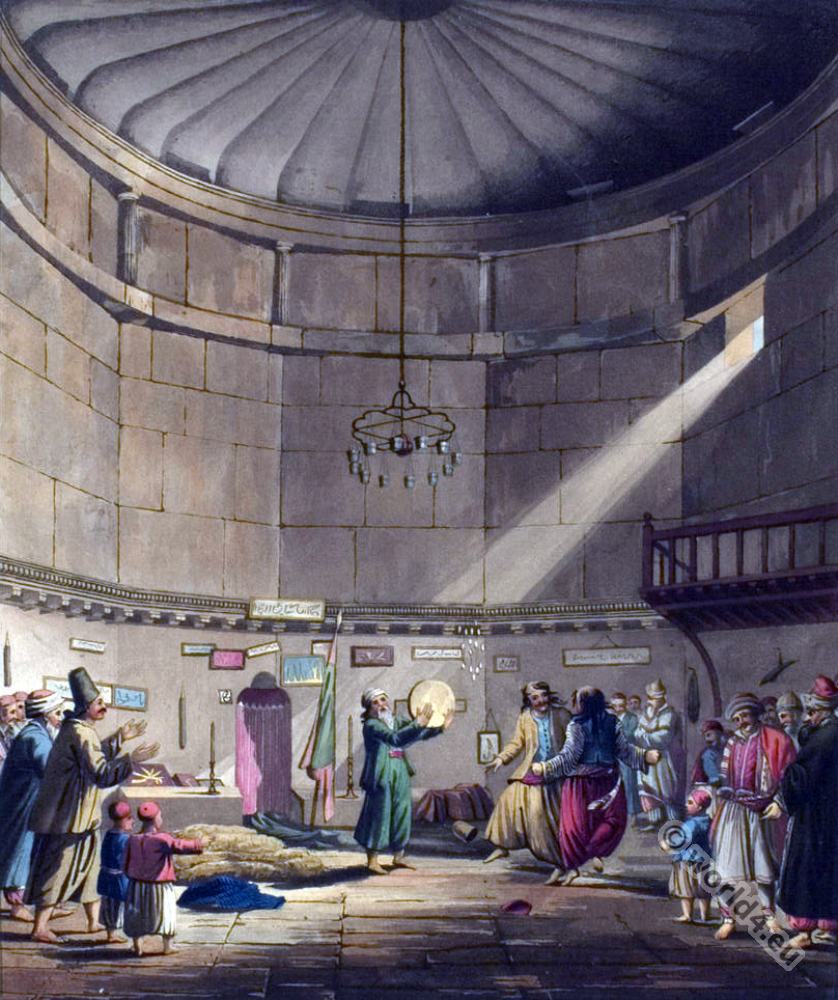
Constantinople and its environs.
Kiz Koulasi. – LEANDER’S, OR THE MAIDEN’S TOWER.
ON THE BOSPHORUS.
Immediately opposite Scutari, and where the rushing current of the Bosphorus meets that of the Golden Horn, is seen a tower rising out of the midst of the turbulent estuary, and forming a striking and singular object, emerging with its white walls from the dark-blue waters. It is a small, square, castellated structure, standing on an insulated rock, and surmounted by a lantern and spire. It is now used as a beacon for ships entering the strait, and boats passing the estuary. It sometimes happens that sudden gusts, like typhoons, come on, attended with a dense fog, so dark as at once to obscure both sides of the Bosphorus. The passage is generally crowded with caiques, which are thus left in the midst of peril without any guide to extricate them. In this blind commotion, the pazar caique, or “great ferry boat,” is an object of great dread, running down and sinking the slight and fragile barks driven against it. The tower is a kind of refuge to which they betake themselves. It was originally built by the emperor Manuel, and formed part of the chain of obstructions thrown across the entrance to the Bosphorus and harbour, in the decline of the lower empire. The other parts have been carried away by the torrents of the strait, and this alone remains on the firmer rock on which it was erected.
From the traditionary story of Hero and Leander, this tower takes its name: the Franks confer upon it the name of the unfortunate lover who lost his life in attempting to cross the current to his mistress; but the Turks assign it to the lady, and model the tale after their own fashion. One of their sultans, whose name is not agreed upon, was warned by his astrologer, that his daughter would perish by the bite of a venomous serpent; so, to obviate the danger, she was sent to this insulated tower. The rugged rock, scantily covered with sea-weed, afforded no harbor for venomous reptiles, and her father never contemplated the possibility ot one reaching her place of seclusion. Her lover, however, separated from personal intercourse, opened a communication by the language of flowers, and had a basketful conveyed to her. She pressed to her bosom his fragrant emblems, which conveyed to her the sentiments of his heart, when a treacherous asp concealed among the leaves stung her to death, and thus the immutable decree of Allah was accomplished by the very means taken to defeat it; and the Turks, in memory of it, call the castle Kiz Koulasi, or “the Maiden’s Tower.”

Source: Constantinople and the scenery of the seven churches of Asia Minor illustrated. In a Series of drawings from nature by Thomas Allom (1804-1872). With an historical account of Constantinople, and descriptions of the plates by the Rev. Robert Walsh LL.D. (1772-1852). Fisher, Son, & Co, 1839. Newgate St., London; & Quai de L’Ecole, Paris.
Discover more from World4 Costume Culture History
Subscribe to get the latest posts sent to your email.






